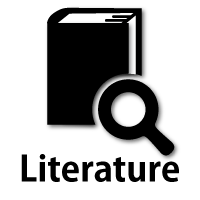Hereditary myopathies
Muscular dystrophies
3. Emery-Dreifuss muscular dystrophy
Emery-Dreifuss muscular dystrophy (EDMD) is a muscular dystrophy that presents with contractures of the elbows, spine, and other major joints often associated with cardiac conduction defects. This condition has been recognized over a long time when Emery and Dreifuss (1966) first described a family with muscular dystrophy that was different from DMD and showed XR inheritance (X-EDMD). Since then, reports have also described an autosomal dominant (AD) inheritance pattern (AD-EDMD). Currently, all such cases are classified as Emery-Dreifuss syndrome.
(1) Pathophysiology
X-EDMD is associated with mutations in the EMD gene located on chromosome Xq28. The EMD gene encodes emerin, a nucleoskeletal protein that is localized on the inner nuclear membrane of the skeletal, cardiac, and smooth muscles. This structural protein is present in the adherens junctions at the intercalated discs of the heart and plays a key role in synchronized contraction. Mutations in the lamin A/C (LMNA) gene on chromosome 1q22 have been discovered in patients with AD-EDMD. Lamin A/C is also located in the inner nuclear membrane of skeletal muscle. Mutations in LMNA are known to be associated with several other disorders including limb-girdle muscular dystrophy (LGMD1B), familial dilated cardiomyopathy, familial lipodystrophy, hereditary neuropathy (Charcot-Marie-Tooth disease) and Hutchinson-Gilford progeria syndrome.
(2) Symptoms and signs
In most cases of EDMD, contracture of the elbows, spines, ankles and other major joints usually precede the onset of weakness, which often begins in the proximal muscles of the upper and distal muscles of the lower limbs. Extension to the cervical spine is followed by kyphosis of the thoracic spine. Proximal muscles of the lower limbs are affected in the advanced stages. Cardiomyopathy is often associated with conduction block that may occasionally result in sudden death. Early diagnosis and prompt management of arrhythmia using cardiac pacemakers or defibrillators are important.
Although many patients with AD-EDMD show clinical features that are almost identical to X-EDMD, a few show no joint contractures, (which are typical presenting features of limb-girdle muscular dystrophy with cardiomyopathy (Kitaguchi et al., 2001).
(3) Histopathological and immunohistochemical examination
Changes that are commonly observed in muscular dystrophy, including necrotic and regenerating fibers, increased numbers of internal nuclei, and various architectural abnormalities such as split and motheaten appearance of fibers are observed even in EDMD. A review of several cases (Merlini, 1986) emphasizes the variability in the degree of changes observed in the skeletal muscle, severe changes in cardiac muscles, and the high risk of sudden death. Skeletal muscle changes observed in cases of ADEDMD are relatively mild.
The nuclear membrane shows no affinity for the anti-emerin antibody in cases of X-EDMD. However, as for AD-EDMD, tests performed using routine histochemical techniques prove that the anti-lamin A/C antibody shows an affinity for the nuclear membrane. Therefore, genetic analysis is needed for diagnostic confirmation of AD-EDMD. We observed changes in the nuclear membrane structure and the fibrous lamina using electron microscopy (Matsubara, 2004).




